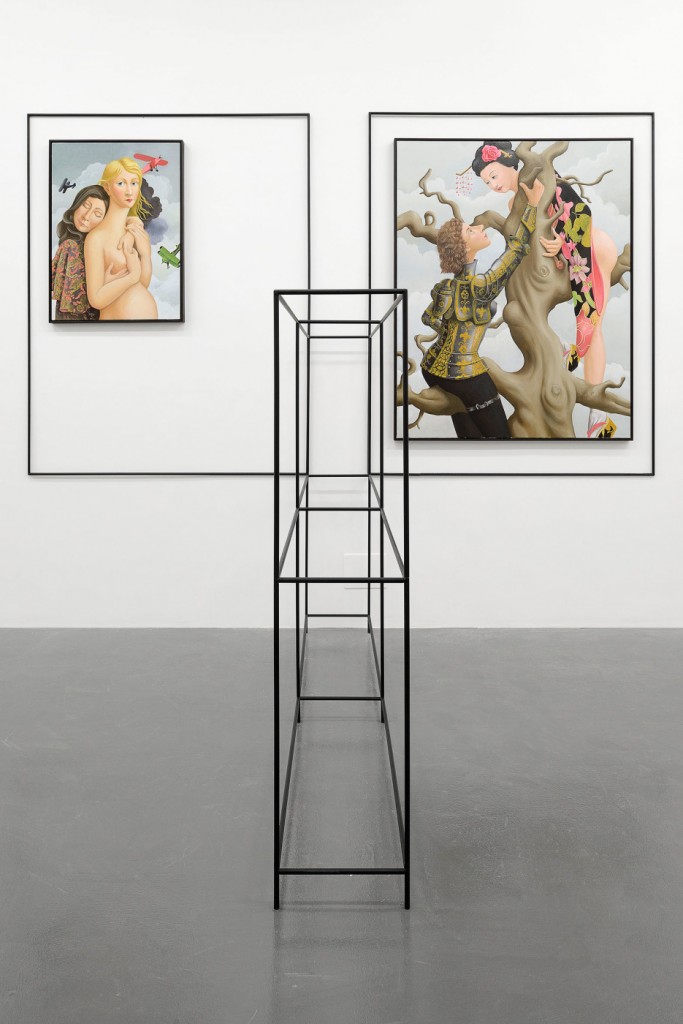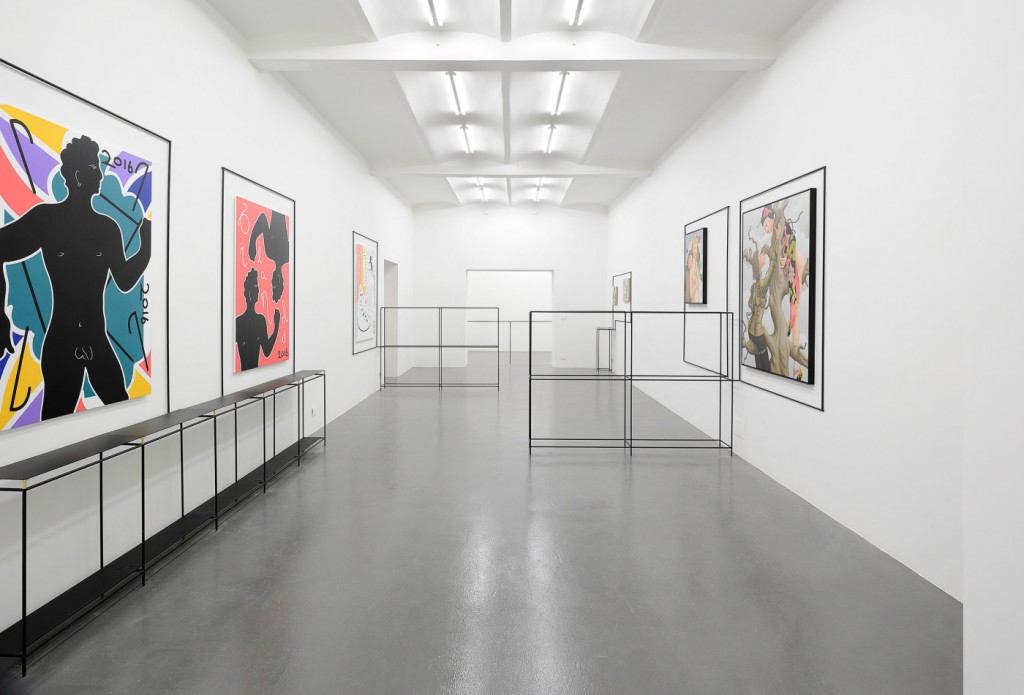Installation view
Photo Credits: Roberto Apa
 The Black Cloud, The Japanese tree
The Black Cloud, The Japanese tree
Installation view
Photo Credit: Roberto Apa
p
p
T293 Rome
Domestic Appendices is a project coming as a result of a collaboration between T293 gallery and RestartMilano. Founded in 2010 with the aim of producing artefacts by mixing the history of design with contemporary Italian craftsmanship techniques, the Milanese brand presents a site-specific intervention that consists of modular structures and uprights connected with recent works by some of the artists represented by the gallery. By delimiting the space around the works, these structures also divide the whole environment into several sub-estates that generate a genuine comparison between three different kinds of painterly practices.
Aliza Nisenbaum takes a broad approach to still lifes through a deep and personal reinterpretation of the portrayed subjects, either these belong to her personal history or they are connected with recent realities of immigration. These images are processed by the artist thoroughly. Hers is a political act, accomplished through the use of strong and resolute brushstrokes that highlight the profiles of the figures to such an extent that it becomes almost possible to perceive the weight and consistency of what is portrayed.
Idealised figures with the faces of friends and relatives of the artist, the figurative and the decorative organised in an anti-hierarchical way, backgrounds that are simultaneously infinite and limited, a reference to a timeless figurative painterly practice: these are some of the major aspects of Patrizio Di Massimo’s new series of paintings. These present themselves as unique and unverbalisable narratives, like enigmas that require a deeper look so that all the details of the story can become manifest.
Marco Palmieri’s paintings depict slender figures and delicate motifs that appear like vectorial lines fluctuating over untouched surfaces. They look like as if they were the result of the movement of a digital cursor, rather than of the pressure of a brush. Orlando, the protagonist of Virginia Woolf’s novel, is a common thread of many of Palmieri’s works. It functions as a symbol of androgyny and of the changing quality of the lines featured in the paintings, moving gently through different styles, stories and genres.
